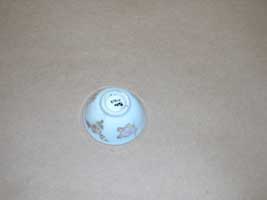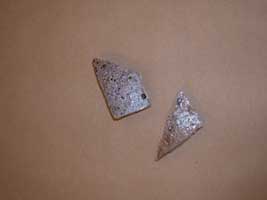My name is Stacey Camp and I am a first year archaeology Ph.D. student in Stanford’s Cultural and Social Anthropology Department. I have learned so much about historical archaeology lab methods in the past three weeks! Thanks to Professor Voss’ and Bryn’s guidance, I can now accurately analyze, identify, and catalogue artifacts from the Market Street Chinatown. The wide variety and large quantity of this collection’s artifacts continues to amaze me. The quality of the Market Street Chinatown’s artifacts has likewise impressed me. This Four Seasons porcelain cup I catalogued two weeks ago was just one of the many artifacts that caught my eye. Rarely does an archaeologist get the opportunity to work with such a large collection of completely intact artifacts such as this cup.
Dr. Rebecca Allen from Past Forward, Inc., was kind enough to come speak to our class this past Tuesday. Her lecture gave us a vivid picture of the bustling bachelor community at the Woolen Mills Chinatown. She also shed light on the Heilenville Chinatown, a community of families that developed after the Market Street Chinatown burnt down. As a budding historical archaeologist, I personally found Dr. Allen’s lecture extremely informative; she thoroughly explained the process of developing a research project and the methods involved in conducting historical and archaeological research. She also offered her assistance to any students interested in developing research projects associated with the Woolen Mills Chinatown. Our Thursday lab class was equally enthralling; Professor Voss and Bryn taught us how to analyze and identify the form and function of various vessels.
Featured Artifact
These sherds most likely originate from what was once a large storage vessel made of Asian stoneware. I was particularly intrigued by the small, raised black dots on these two sherds. After discussing the find with Professor Voss, I learned that these raised spots are drops of glaze that were splattered onto the vessel for unknown reasons. Professor Voss said this was the first time she has seen such spots. These sherds share the same catalogue number as the rim sherds photographed above, though they may represent two unrelated vessels. The rim sherds demonstrate the enormous size of some of the Market Street Chinatown’s storage vessels.


